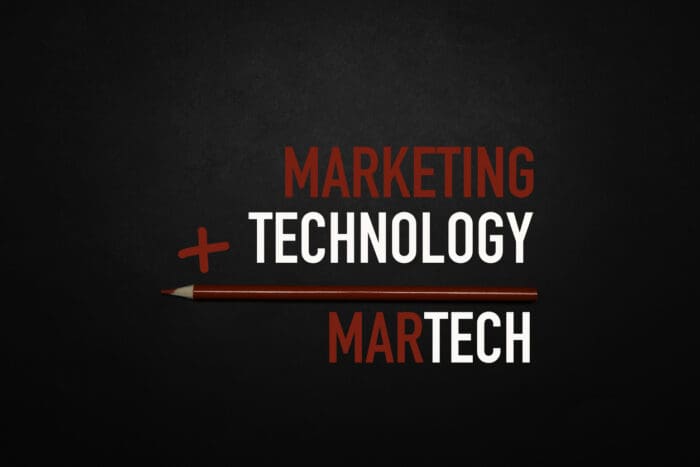How much do companies in your industry spend on marketing? Here, we look at the average industry marketing budget by industry for sectors like technology, retail, healthcare, finance, and more. Find out how much to allocate and where to focus your marketing spend.
Key Takeaways
- In 2023, companies allocated an average of 13.6% of their total budgets to marketing, with significant variations across industries reflecting unique market demands.
- The technology and software sectors lead in digital marketing spending, and many startups are advised to allocate 11-30% of their revenue to maintain competitiveness.
- Emerging AI, automation, and sustainability trends influence marketing budget allocations, highlighting the shift toward digital channels and ethical practices.
- Trends in digital marketing budgets show fluctuations due to economic uncertainty in 2023. Some businesses are decreasing their spending, while others are preparing to reinvest in digital strategies for 2024, indicating a broader shift towards prioritizing digital marketing over traditional methods.
Understanding Marketing Budgets Across Industries

Marketing budgets differ significantly across industries, reflecting each sector’s unique demands and competitive landscapes.
In 2023, companies allocated an average of 13.6% of their total budgets to marketing spending, a testament to the growing importance of strategic marketing investments. However, nearly 60% of marketers feel pressured to justify spending, highlighting the need for data-driven digital marketing budget decisions.
Geographic factors and business budgets are crucial in influencing marketing costs, necessitating careful analysis to allocate resources effectively and reduce expenses.
A comprehensive marketing budget helps avoid unexpected cuts and ensures the proper execution of strategies. Aggregating data from various sources allows marketing leaders to determine optimal budget allocations for the entire marketing budget and maximize their return on investment.
Why You Need a Marketing Budget
A marketing budget is essential for businesses to allocate resources effectively and achieve their marketing goals. It serves as a financial blueprint, guiding companies on how much to invest in various marketing channels and initiatives. Without a well-defined marketing budget, businesses may struggle to measure the effectiveness of their marketing efforts, leading to wasted resources and missed opportunities.
With a marketing budget, companies can prioritize their marketing channels, track their return on investment (ROI), and make data-driven decisions to optimize their marketing strategy. This structured approach ensures that every dollar spent contributes to the overall marketing goals, whether increasing brand awareness, generating leads, or driving sales. In essence, a marketing budget is not just about controlling costs but maximizing the impact of marketing efforts.
Marketing Budget as a Percentage of Revenue
Determining the ideal marketing budget as a percentage of revenue is crucial for aligning marketing spend with business goals. A common rule of thumb is to allocate between 6% and 20% of revenue to marketing, but this can vary significantly based on the company’s stage, industry, and growth targets.
For instance, B2B companies spend 2-5% of their revenue on marketing, focusing on targeted campaigns and relationship-building activities. In contrast, B2C companies may allocate 5-10% of their revenue to marketing, emphasizing broader reach and consumer engagement. Startups and high-growth companies might allocate up to 30% of their revenue to marketing to accelerate market penetration and brand recognition.
It’s essential to tailor the percentage of revenue spent on marketing to the company’s specific needs and goals, ensuring that the marketing budget supports both short-term objectives and long-term growth.
Average Marketing Budget Percentage by Industry
The average marketing budget percentage varies widely across industries, reflecting each sector's unique demands and competitive landscapes. For example, the banking, finance, and insurance industries typically allocate around 9.49% of their revenue to marketing. This investment is crucial for building trust and maintaining customer relationships in a highly regulated environment.
In contrast, the communications and media industry spends approximately 14.27% of its revenue on marketing, driven by the need to stay relevant and engage with a constantly evolving audience. Retail and e-commerce sectors also tend to have higher marketing spends, often exceeding 10% of their revenue, to maintain visibility and drive consumer engagement in a competitive market.
Understanding your industry's average marketing budget percentage provides a valuable benchmark, helping you gauge whether your marketing spend aligns with industry standards and supports your business objectives.
Average Marketing Budget Allocation by Industry

The average marketing budget allocation varies widely across industries. In 2023, the typical marketing budget was approximately 9.1% of revenue, which has seen an upward trend from previous years.
Businesses should budget for digital marketing efforts and invest in new marketing channels to stay competitive and discover more effective long-term solutions.
This variation underscores the importance of industry-specific insights when planning marketing budget percentages and marketing budgets.
Different sectors allocate their marketing funds in unique ways.
Technology and Software
The technology sector is leading digital marketing spending. Digital media spending has surpassed TV advertising for the first time, reflecting the shift towards online platforms.
Startups in this sector are advised to allocate about 11% of their revenue to marketing to stay competitive and establish a strong market presence. Developing a comprehensive digital marketing strategy is crucial for planning and prioritizing marketing efforts, ensuring alignment with overall company goals, and leveraging insights to improve revenue and brand visibility.
Retail and E-commerce
The retail and e-commerce industries are heavy spenders on digital marketing, often outpacing other sectors combined. Retail brands typically allocate between 5% and 10% of their revenues to marketing, focusing heavily on digital channels to enhance customer engagement and loyalty.
Content marketing, a vital component, can account for 30-40% of their marketing budgets. This emphasis on digital marketing is driven by the need to maintain a solid online presence and keep pace with rapidly changing consumer behaviors. Retailers invest heavily in social media marketing, search engine optimization (SEO), and email campaigns to reach their target audience effectively. Moreover, the rise of mobile commerce has prompted these industries to allocate resources towards mobile-friendly websites and apps, ensuring a seamless shopping experience for customers on the go.
In addition to digital strategies, retail and e-commerce companies often explore innovative marketing techniques such as influencer partnerships, personalized marketing, and virtual reality experiences to stand out in a crowded market.
Healthcare and Pharmaceuticals
Healthcare marketing budgets average around 6% of revenue, with aggressive growth companies allocating up to 14%. These funds often focus on digital strategies to enhance patient engagement and address regulatory compliance, which is crucial for building trust and improving outreach.
This industry increasingly leverages digital marketing channels such as social media, content marketing, and search engine optimization to reach a broader audience and improve patient education. Additionally, telemedicine and virtual health services are becoming integral to healthcare marketing strategies, requiring significant investments in digital infrastructure and online patient portals.
By prioritizing digital marketing efforts, healthcare organizations can enhance patient experiences and streamline communication, making it easier to provide timely information and updates.
Financial Services
Financial services companies typically allocate 7-10% of their revenue to marketing, emphasizing trust-building and brand reputation.
In a sector where customer trust is paramount, transparent communication and engagement are essential to their marketing strategies. These companies often invest in digital marketing channels to enhance customer interaction and streamline service delivery. Social media platforms, content marketing, and search engine optimization are crucial tools for reaching and educating their audience.
Additionally, financial services firms increasingly focus on personalized marketing efforts, using data analytics to tailor their offerings to individual customer needs. This customized approach helps build stronger customer relationships and increase customer retention rates.
Manufacturing and Industrial
The manufacturing and industrial sectors allocate 5-7.5% of their revenue to marketing. These industries often rely on B2B marketing strategies, where word-of-mouth and referrals play significant roles.
Recent data benchmarks indicate specific figures for B2B marketing budgets, reflecting the unique demands of this sector. In these sectors, marketing efforts typically focus on building long-term relationships and establishing trust with other businesses. This involves participating in industry trade shows, hosting webinars, and producing detailed product demonstrations to showcase their capabilities and innovations.
Additionally, digital marketing is becoming increasingly important in the manufacturing and industrial sectors. Companies invest in search engine optimization (SEO) and content marketing to enhance their online presence and reach potential clients more effectively. Social media platforms like LinkedIn are also used to connect with industry professionals and share thought leadership content.
Creating a Marketing Strategy
Creating a marketing strategy is crucial for businesses to achieve their marketing goals and optimize their marketing budget. A well-crafted marketing strategy includes specific objectives, key results, and tactics to achieve those results. It should also outline a plan for measuring and tracking the effectiveness of marketing efforts.
To start, businesses should define clear marketing objectives, such as increasing brand awareness, generating leads, or driving sales. Next, identify the key results that will indicate success, such as specific metrics for website traffic, conversion rates, or social media engagement. Tactics should then be developed to achieve these results, including content marketing, social media campaigns, email marketing, and paid advertising.
With a clear marketing strategy, businesses can prioritize their marketing channels, allocate their budget effectively, and make data-driven decisions to optimize their marketing efforts. This strategic approach ensures that marketing initiatives are aligned with business goals and deliver measurable results.
How to Determine Your Marketing Spend
Determining your marketing spend requires thoroughly analyzing your company’s goals, industry, and marketing channels. Here are some steps to follow:
- Determine your marketing goals: What do you want to achieve with your marketing efforts? Do you want to increase brand awareness, generate leads, or drive sales?
- Research your industry: What is your industry's average marketing budget percentage? What are your competitors spending on marketing?
- Analyze your marketing channels: Which are most effective for your business? Are you using social media, email marketing, paid advertising, or content marketing?
- Determine your marketing budget: Based on your goals, industry, and marketing channels, determine how much you should spend on marketing.
- Allocate your budget: Allocate your marketing budget across your marketing channels, prioritizing the most effective channels for your business.
- Track and measure: Track and measure the effectiveness of your marketing efforts, making adjustments to your budget and strategy as needed.
By following these steps, businesses can determine their marketing spend and create a marketing strategy that drives results and optimizes their marketing budget. This structured approach ensures that marketing investments are aligned with business goals and deliver the highest possible return on investment.
Factors Influencing Marketing Budget Allocation
Factors such as company revenue, market competition, and product lifecycle influence marketing budgets. Understanding these elements helps make informed budget decisions and achieve a high return on investment.
Company Revenue
Company revenue significantly influences marketing budget allocation. In 2023, the average marketing budget was 9.1% of total income, which reflects a percentage of revenue. Retail and e-commerce may allocate up to 20%, while manufacturing companies typically spend around 5%.
Especially in tech, startups might allocate 15-30% of projected revenue to marketing to ensure rapid growth.
Market Competition
Market competition significantly impacts marketing budgets. Increased competition often necessitates higher marketing spend to capture market share. B2C companies, facing faster product cycles and broader audiences, typically invest more in marketing than B2B companies.
Healthcare brands, for instance, invest heavily in marketing activities to establish brand authority amid fierce competition.
Product Lifecycle
The product lifecycle stage also influences marketing budget allocation. Companies invest more in marketing strategies during the growth phase to gain market traction. As products mature, the focus may shift towards maintaining market share and supporting existing customers.
Understanding these lifecycle stages helps companies strategically allocate resources for maximum effectiveness.
Digital vs. Traditional Marketing Spend by Industry

The balance between digital and traditional marketing spend varies across industries. According to Gartner, 56% of marketing budgets are now allocated to digital channels, reflecting a shift towards online marketing. However, traditional advertising still holds value, accounting for 44% of marketing budgets.
Evaluating the cost-effectiveness of both channels is essential for optimal budget allocation.
Digital Marketing Trends
Digital marketing trends show a significant shift towards online platforms. Retail is experiencing rapid growth in digital marketing spend. Tech startups prioritize digital strategies, allocating up to 30% of their revenue to quickly establish brand recognition.
Platforms like TikTok and YouTube are increasingly prioritized for budget allocation due to their growing user bases.
Traditional Advertising Strategies
Traditional advertising strategies remain relevant despite a gradual decline in spending. Companies often allocate around 25% of their marketing budget to conventional media. Effective tactics include event marketing, print media, and OTA media. However, measuring ROI from traditional channels can be challenging, underlining the importance of a balanced approach.
Optimizing Your Marketing Budget for Maximum ROI

Optimizing marketing budgets for maximum ROI involves strategic allocation and continuous evaluation as part of a comprehensive marketing strategy. Effective budget allocation can significantly enhance a company's growth trajectory and market presence.
Regular reviews of budget allocation, ideally biweekly or monthly, ensure alignment with campaign performance.
Leveraging Data Analytics
Leveraging data analytics is crucial for optimizing marketing budgets. Predictive analytics helps in making informed budget decisions by forecasting customer behavior. High-quality analytics tools are necessary for tracking key metrics like website traffic and conversion rates.
Automation also plays a vital role in streamlining data collection and analysis.
Channel Performance Evaluation
Evaluating the performance of different marketing channels is essential for optimizing spending. SEO, for example, can yield high returns over time, making it a valuable investment channel. Marketing mix modeling (MMM) can assist in predicting ROI across various channels, ensuring effective budget allocation.
Comparing costs between digital and traditional channels helps in making informed decisions.
Adjusting Budgets Based on Performance
Adjusting budgets based on performance metrics is crucial for maximizing ROI for the target audience. Marketers should review their budget allocation regularly to ensure responsiveness to performance changes. The 70-20-10 rule is a suggested strategy for reallocating funds from underperforming channels.
Balancing marketing spend is key to driving sustainable results and avoiding diminishing returns.
Emerging Trends in Marketing Budgets

New marketing budget trends show the adoption of new tech and changing consumer expectations.
AI and automation are becoming table stakes for budget management and are supercharging efficiency. Sustainability and ethics also shape budget decisions as businesses respond to consumer demand for responsible practices.
AI and automation in marketing are a sea change, not a trend. These tools allow marketers to analyze vast amounts of data, generating insights that drive more effective and personal campaigns.
Predictive analytics powered by AI allows companies to forecast market trends and consumer behavior, allowing them to budget more strategically. Automation tools do the repetitive tasks so marketers can focus on the creative and strategic work.
As consumers become more aware of their purchases' environmental and social impact, sustainability and ethics are getting more attention.
Companies dedicate parts of their marketing budget to promoting sustainable practices and ethical sourcing. This builds brand loyalty and differentiates the brand in a crowded market. Consumers will support brands that share their values, so sustainability and ethics are a competitive advantage.
Beyond AI, automation, and sustainability, other trends include data privacy and security. With data breaches happening more often, companies invest in robust security to protect consumer data. This is critical to maintaining trust and complying with GDPR and CCPA.
AI and Automation
AI and automation are transforming marketing budget management. Predictive analytics allows for precise budget planning by forecasting customer behavior. Companies are allocating budgets to experiment with new technologies, leveraging automation for faster time to market and a quicker feedback cycle.
Social Media Influence
Social media is a dominant force in marketing budgets. Brands are significantly increasing their investment in creator marketing for 2024. Platforms like TikTok, YouTube, Facebook, and Instagram are top priorities for marketing spend due to their substantial impact on customer engagement.
This trend underscores the importance of social media marketing in modern marketing strategies.
Sustainability and Ethics
Sustainability and ethical practices are becoming crucial in marketing. Companies prioritizing these elements in their strategies will likely achieve greater brand loyalty and competitive advantage.
The increasing marketing budgets for these initiatives reflect the shift towards sustainable practices.
Summary

Understanding the nuances of marketing budgets across industries is essential for effective allocation and maximizing ROI. Factors like company revenue, market competition, and product lifecycle stages significantly influence budget decisions. The balance between digital and traditional marketing spend must be carefully evaluated to ensure a comprehensive strategy.
Emerging trends like AI, automation, social media influence, and sustainability are shaping the future of marketing budgets. By staying informed about these trends and leveraging data analytics, companies can optimize their marketing spend and achieve better results. Remember, a well-planned marketing budget is crucial for driving growth and maintaining a competitive edge.

Frequently Asked Questions About Marketing Budgets by Industry
What factors should businesses consider when setting their marketing budget?
Businesses should consider several key factors when setting a marketing budget. These include industry standards, business size, growth objectives, target audience, competition, and historical performance of marketing efforts. A common approach is to allocate a percentage of revenue—usually between 5% and 12% for most industries—but it's also essential to consider digital vs. traditional marketing needs, customer acquisition costs (CAC), and lifetime customer value (LTV).
Why do marketing budgets vary significantly between industries?
Marketing budgets vary by industry because of differing sales cycles, market competition, and audience behavior. For example, B2B manufacturing companies might spend less on marketing as their customer base is more niche. Meanwhile, consumer-facing businesses like retail or e-commerce might require higher spending to remain competitive and visible to a broad audience. Additionally, industries like tech and pharmaceuticals, which rely on cutting-edge innovation, often allocate larger budgets to maintain market leadership.
How can a company determine the right balance between branding and direct response marketing?
The right balance between branding and direct response marketing depends on the company's growth and long-term goals. Branding helps build recognition and trust over time, which is essential for sustaining growth. On the other hand, direct response marketing is focused on immediate, measurable actions like leads or sales. Newer businesses might emphasize direct response for quick returns, while established companies often invest more heavily in branding to sustain market share.
What are the benefits of benchmarking your marketing budget against industry averages?
Benchmarking your budget against industry averages lets you see if you're underinvesting or overextending compared to competitors. This provides valuable insights into whether your budget aligns with expected growth and market trends. However, industry benchmarks should serve as a guide, not a rule—what works for one business might not be the right fit for another. Tailoring the budget to your specific goals and metrics is vital.
How do economic fluctuations impact marketing budgets across industries?
Economic shifts, like recessions or periods of rapid growth, can significantly affect marketing budgets. During downturns, some industries cut back, while others, such as e-commerce or healthcare, may ramp up spending to capture changing consumer demand. Businesses that adjust their budgets strategically, focusing on customer retention and high-ROI tactics, tend to perform better in economic downturns. It's essential to remain flexible and monitor market conditions to ensure your budget is resilient.
What marketing channels are receiving the most investment in 2024?
As of 2024, digital marketing channels continue to dominate, with social media, search engine marketing (SEO and PPC), and content marketing leading the way. Additionally, data-driven strategies like marketing automation, AI-driven advertising, and personalized email campaigns are seeing increased investment. Industries like retail and e-commerce are heavily focused on video content and influencer partnerships, while B2B sectors are allocating more toward LinkedIn advertising and webinars to drive lead generation.
How should businesses measure the effectiveness of their marketing budget?
Businesses should measure effectiveness through key performance indicators (KPIs) such as return on investment (ROI), cost per lead (CPL), and customer acquisition cost (CAC). Tracking conversion rates, engagement metrics, and customer lifetime value (CLV) also gives insight into how well marketing efforts are performing relative to budget. Regularly evaluating these metrics allows businesses to refine their spending and make data-driven decisions to improve overall effectiveness.

Ready to Optimize Your Marketing Budget?
Understanding how your marketing budget compares to industry standards is the first step in maximizing your growth potential. Whether you want to increase ROI, fine-tune your strategy, or gain a competitive edge, we’re here to help.
Get Expert Insights
Schedule a complimentary consultation with our team to discuss tailored strategies to elevate your business.
📞 Call us at (608) 410-4450 or Click Here to Schedule
Stay Ahead of the Competition
Subscribe to our newsletter for the latest industry insights, actionable tips, and strategies to ensure your marketing budget works smarter, not harder.
📧 Sign Up Now
Let’s work together to ensure every marketing dollar delivers your desired results.
About the author
Mark A. Hope is the co-founder and Partner at Asymmetric Marketing, an innovative agency dedicated to creating high-performance sales and marketing systems, campaigns, processes, and strategies tailored for small businesses. With extensive experience spanning various industries, Asymmetric Marketing excels in delivering customized solutions that drive growth and success. If you’re looking to implement the strategies discussed in this article or need expert guidance on enhancing your marketing efforts, Mark is here to help. Contact him at 608-410-4450 or via email at mark.hope@asymmetric.pro.

